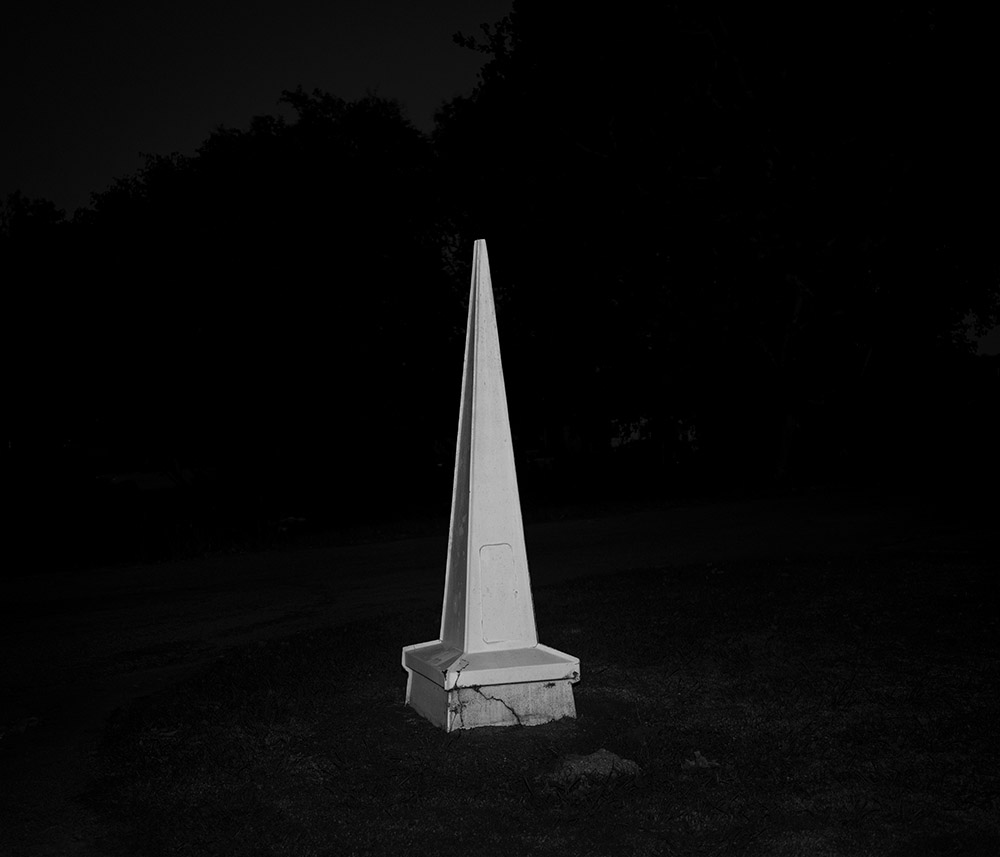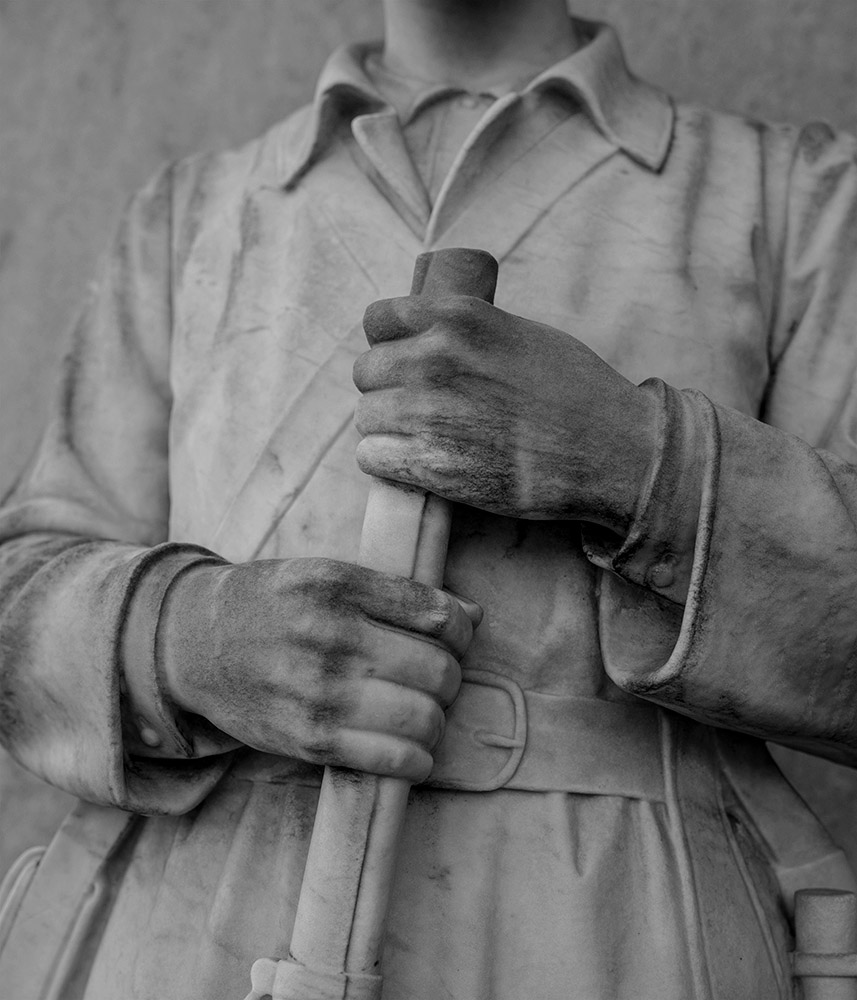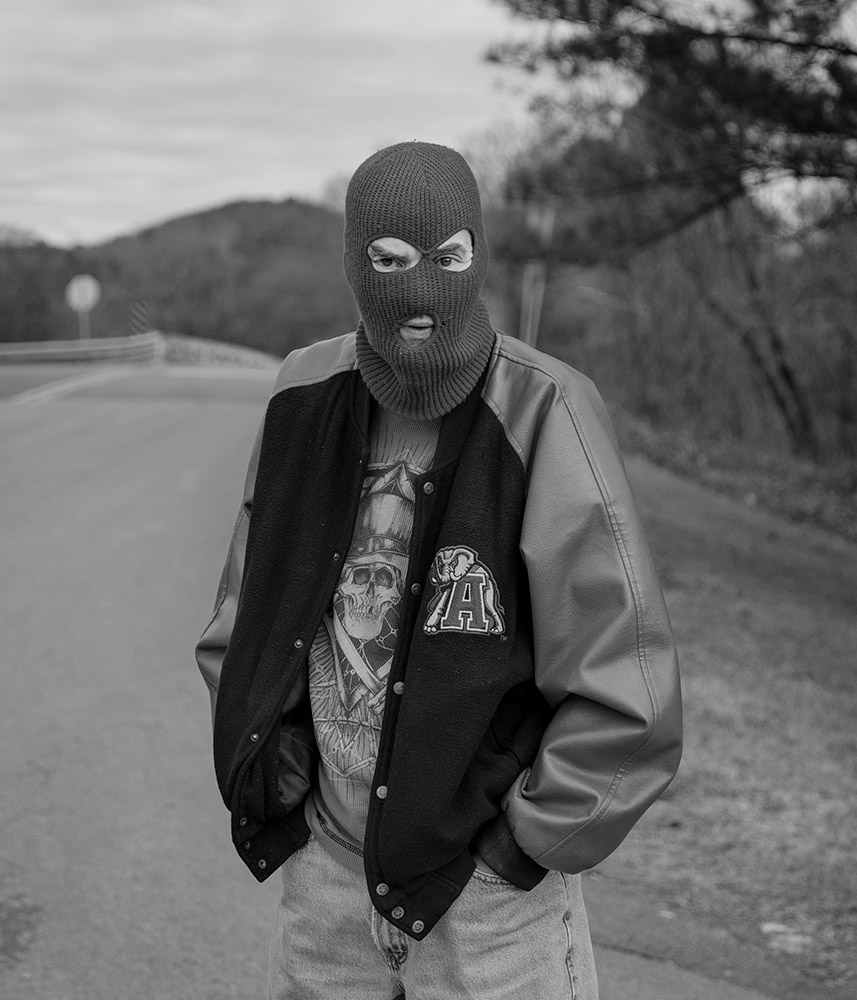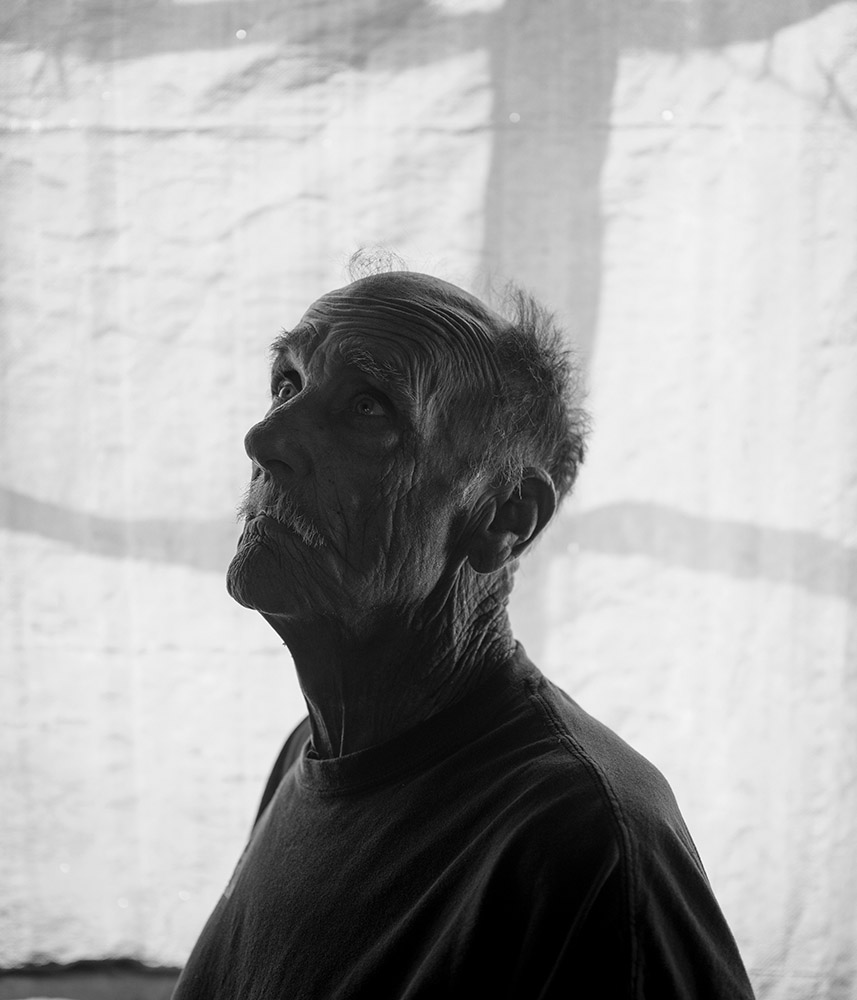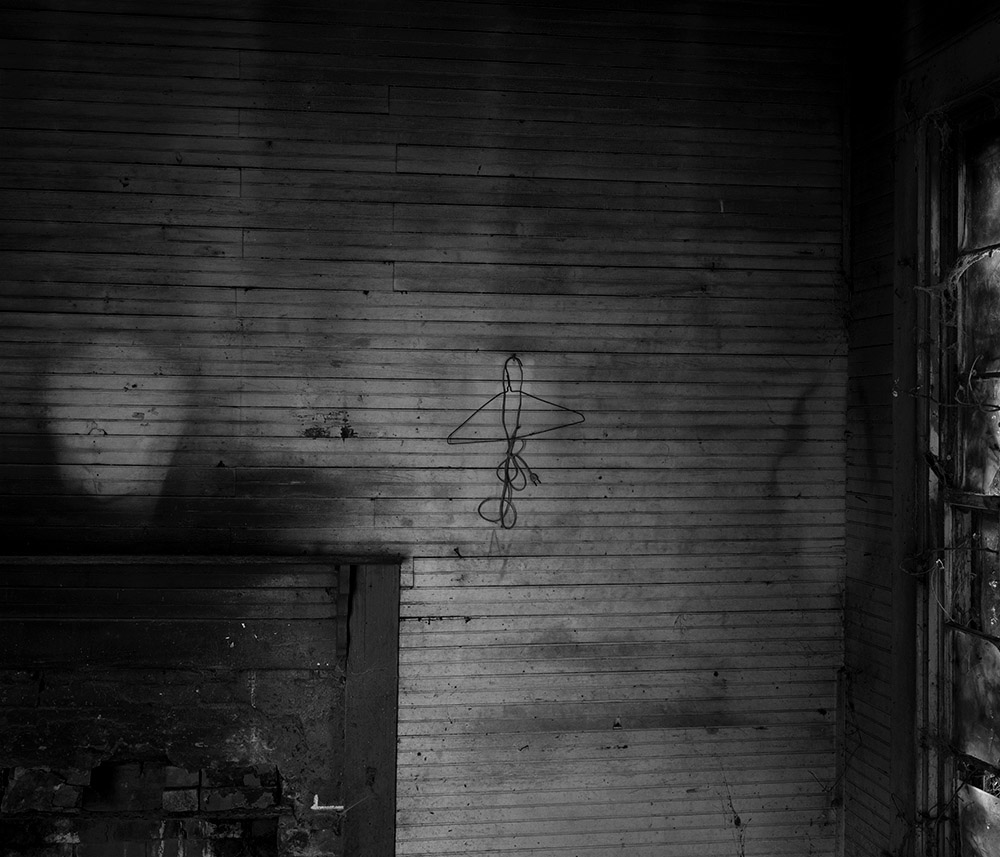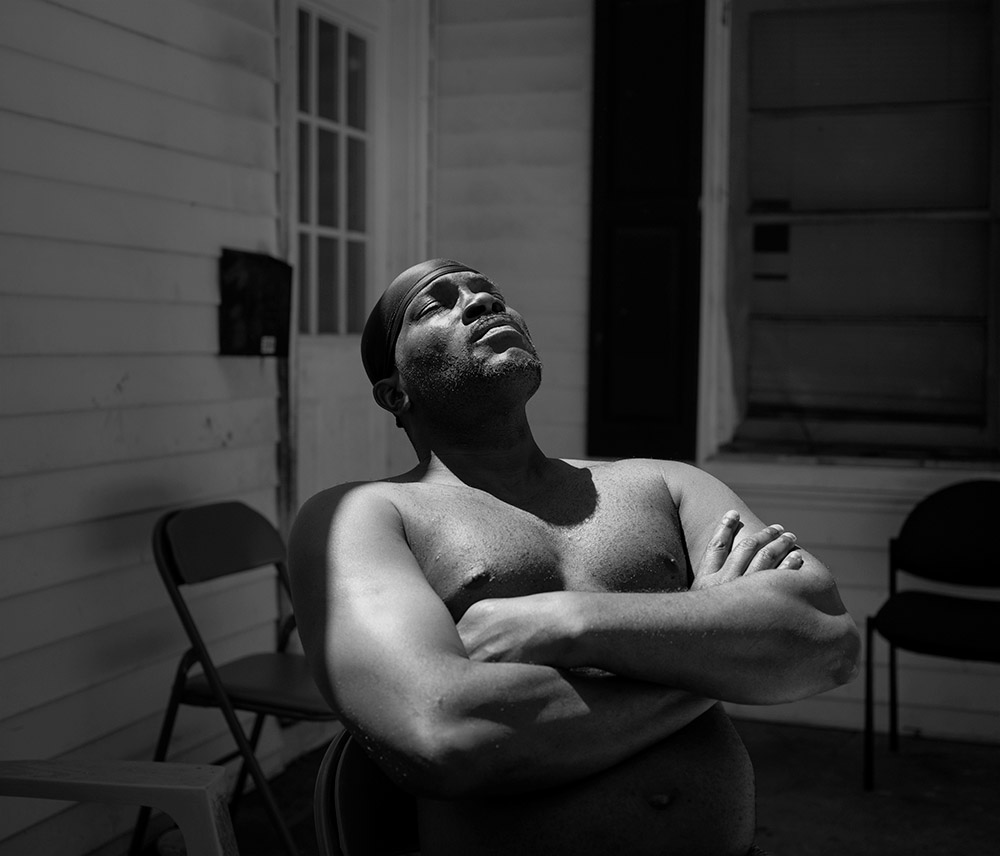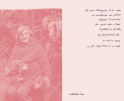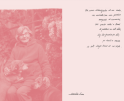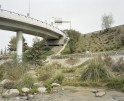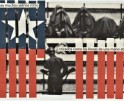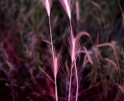Jared Ragland: What Has Been Will Be Again
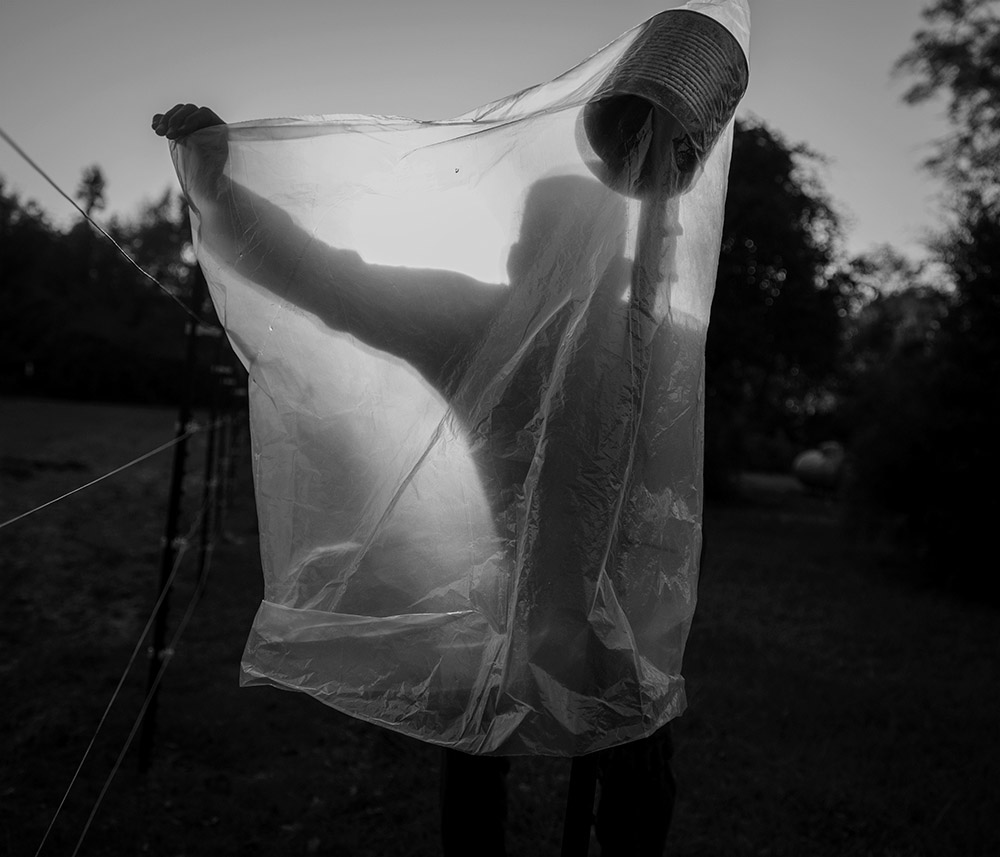
©Jared Ragland; Spring Hill, Barbour County, Ala. Michael Farmer, 57, fashions a scarecrow next to his garden on Election Day. 2020. Michael Farmer’s family has lived in Spring Hill for generations, where the predominantly Black community has faced a history of racial violence and voter disenfranchisement. On November 3, 1874 a white mob attacked the Spring Hill polling station, destroying the ballot box, burning the ballots, and murdering the election supervisor’s son. Farmer is a lifelong Democrat and military veteran who served two tours overseas in Operation Desert Storm and Operation Iraqi Freedom. When asked what he hoped might come from the 2020 presidential election, Farmer said, “I hope the young folks might think about what their ancestors came through to get where we are.”
Projects featured this week were selected from our most recent call-for-submissions. I was able to interview each of these artists to gain further insight into the bodies of work they shared. Today, we are looking at the series What Has Been Will Be Again by Jared Ragland.
Jared Ragland is a fine art and documentary photographer and former White House photo editor. His collaborative, socially-conscious art practice critically explores the identity and history of place through social science, literary, and historical research methodologies.
Jared is the photo editor of National Geographic Books’ The President’s Photographer: Fifty Years Inside the Oval Office,and he has worked on assignment for NGOs in the Balkans, the former Soviet Bloc, East Africa and Haiti. In 2015, Jared was named one of TIME Magazine’s “Instagram Photographers to Follow in All 50 States.” He is the recipient of a 2017 Alabama State Council on the Arts fellowship, was awarded third place at the 2017 PhotoNOLA Review Prize, and first film, SOME MILLION MILES, received the Reel South Short Award at the 2019 Sidewalk Film Festival and is distributed by PBS. He is a 2020-21 Do Good Fund Artist-in-Residence and 2020 Magnum Foundation grantee.
Jared’s work has been exhibited internationally, with recent shows at Candela Books + Gallery (Richmond, Va.), the In/Out Transylvania Foto Festival (Cluj, Romania), Birmingham Museum of Art SHIFT space, The National Geographic Society, and the Royal Geographic Society in London. He has produced three artist books with Eliot Dudik under their collaborative publishing platform, One Day Projects, which can be found in collections including the Beinecke Rare Book & Manuscript Library at Yale University, the Archive of Documentary Arts at Duke University, Birmingham Museum of Art, Contemporary Art Center New Orleans, and the Phoenix Art Museum. Jared’s photographs have been featured by The New Yorker, New York Times, Forbes, The Oxford American, and The Washington Post, and his visual ethnographic research has been published in more than a dozen social science textbooks and high-impact journals.
Jared currently serves as Assistant Professor of Photography at Utah State University.
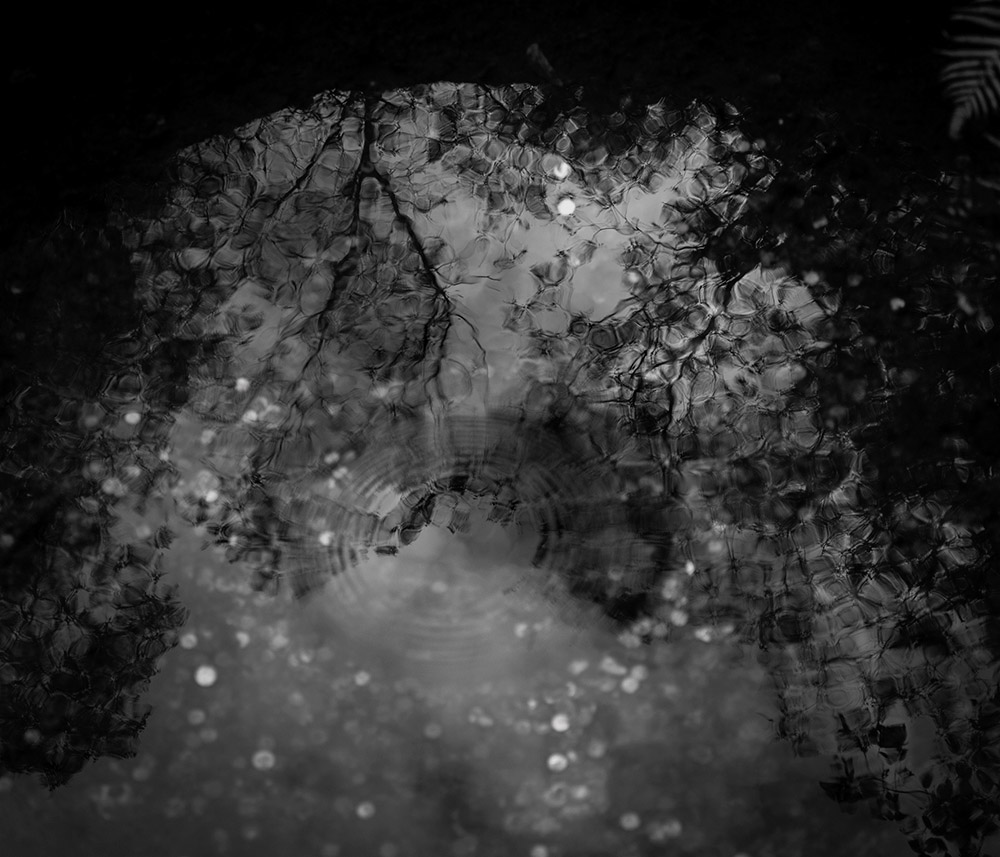
©Jared Ragland; Dallas County, Ala. Perine Well at Old Cahawba. 2020. The area now known as Old Cahawba was first occupied by large populations of Paleoindians; then from 1000-1500 CE the Mississippian period brought agriculture and mound builders. Spanish conquistadors were welcomed to a walled city with palisades, yet the Afro-Eurasian diseases the explorers brought with them killed thousands of indigenous people in the 16th and 17th centuries. The remaining native peoples were killed or forced to move by an even greater influx of Europeans. By the early nineteenth century, the dirt from the ancient mounds at Cahawba was used to build railroad beds, and the town briefly served as the state capital of Alabama. At the time it was dug in the 1850s, the Perine Well, at seven hundred to nine hundred feet deep, was the second-largest known well in the world, feeding cool water through a system of pipes to “air condition” a twenty-six-room brick mansion. Cahawba became a ghost town shortly after the Civil War, largely due to recurring floods. By the late 1800s, the town site was purchased for $500 and its buildings demolished.
What Has Been Will Be Again
Photographed at a critical moment of pandemic and protest, economic uncertainty, and political polarization, What Has Been Will Be Again has led me across more than 15,000 miles and 50 counties to bear witness to generational racial, ecological, and economic injustice in Alabama. From Native American genocide to slavery and secession, and from the fight for civil rights to the championing of Trumpist ideology, the national history written on, in, and by the people and landscapes of my home state reveal problematic patterns at the nexus of our larger American identity.
Social isolation is both a phrase and experience that has defined the past year, and What Has Been Will Be Again expressly evokes the alienation that has characterized the moment. Yet the work features sites for which isolation and violence is nothing new—places where extracted labor and environmental exploitation have exacted heavy tolls. Such isolation is less accidental or temporal, and more a product of decades of willful neglect by a mainstream America only now starting to visualize what––and who––has been pushed out of our collective frame of vision. By tracing historic colonial routes including the Old Federal Road and Hernando de Soto’s 1540 expedition, the project illustrates the perpetuated segregation and sequestration masked by white supremacist myths of American exceptionalism and reckons a haunting yet tender look at my home state’s troublesome past and tenuous present.
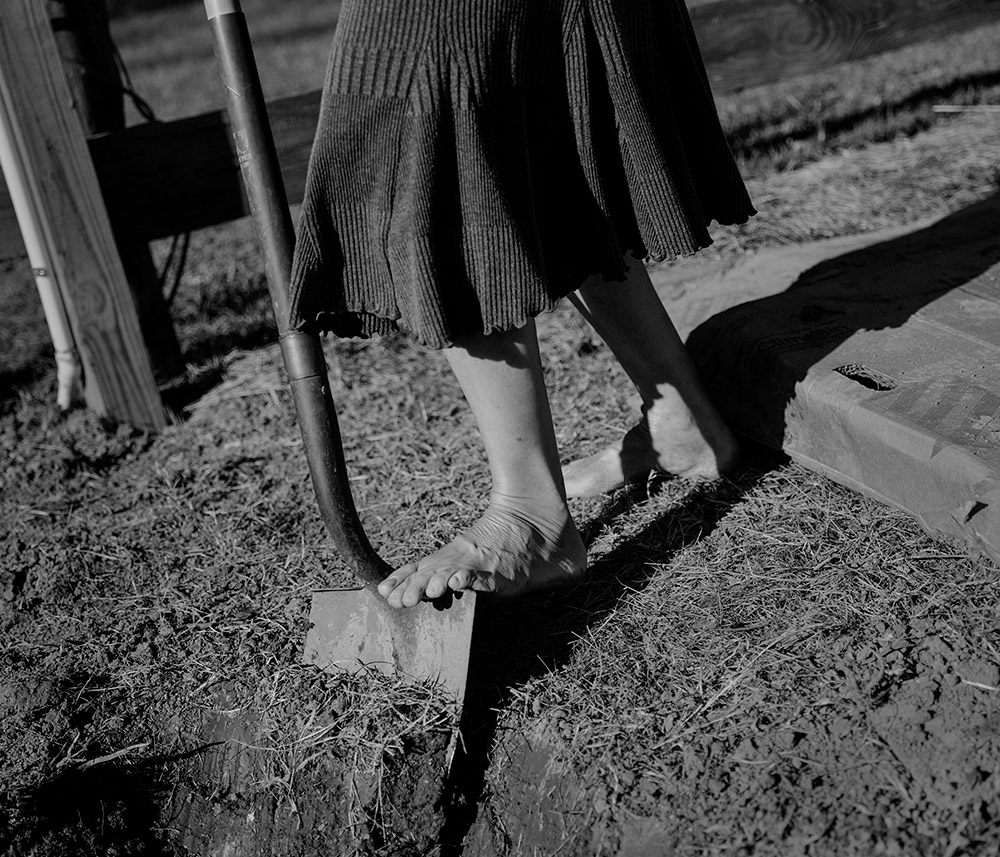
©Jared Ragland; Childersburg, Talladega County, Ala. Sunshine turns soil in the Commons Community Workshop garden. 2020. As a response to recent national division and the COVID-19 outbreak, Sunshine and her husband Rusty recently bought a home in Childersburg and created The Commons Community Workshop. Through their Fearless Communities Initiative they are building a community garden in a donated downtown lot, hosting trade days, and fostering relationships with their neighbors as a means of “celebrating solidarity and strength.” The couple invited me to find them on Facebook where Sunny posts Initiative announcements, vocalizes her opposition to mask wearing and vaccines, and shares her beliefs about global child sex trafficking networks, the threat of Marxism, and the coming of the end times.
Daniel George: What compelled you to traverse and photograph your home state of Alabama, and how would you say that your perspective as a native is manifest in your work?
Jared Ragland: Between 2010–2013 I served as a White House Photo Editor in the Obama White House. On my last day on the job, the president invited me into the Oval Office for a farewell meeting. During our time together we joked and talked about books and our mutual love for the writing of Walker Percy. He asked what was coming up next, and I told him about the vintage RV waiting for me back home in Alabama and how I planned to crisscross the state and make photographs. He loved the idea. But before I ever got home to Alabama, the RV blew up. And when I say blew up, I mean that literally—explosive flames, fire department, complete and utter meltdown.
While the journey I’d hope to take in the RV wouldn’t come to immediate fruition, my departure from the White House in 2013 still marks the embarkation of my artistic journey—a journey that has led me to pursuing a studio practice that critically explores Southern identity, marginalized communities, and the history of place.
Last year, the dream project I shared with President Obama finally became a reality (although sans RV) through the generous support of both the Magnum Foundation and The Do Good Fund, a Columbus, Georgia-based public charity focused on building a museum-quality collection of photographs taken in the American South since World War II.
Author and native Alabamian Rick Bragg has called the state the “crossroads of history.” In many ways, the state has also played a pivotal role in the history of photography. From Lewis Hine’s photographs of child labor to Walker Evans’ chronicling of rural poverty and Gordon Parks’ Segregation Story to the documentation of the Civil Rights Movement, images of Alabama form a kind of backbone of American documentary storytelling.
As a photographer, I’m interested in engaging that documentary tradition. And as an Alabamian, I am acutely aware of and concerned with the many contradictions and complexities that exist in my home state. Through the Do Good residency I was ultimately afforded the means to travel and photograph, to look and read and listen, and to create a project that illustrates Alabama’s rich beauty and fraught history and contends with how perpetuated violence and injustices masked by white supremacist myths have made their mark across the landscape.
DG: Despite the “troublesome past and tenuous present” of the state, your photographs seek out humanity—and in many cases feel empathetic. I like the description you use in your artist statement—”haunting yet tender.” Could you talk about this nuanced approach, and why it was important to maintain throughout the project?
JR: Photography can be an incisive instrument of criticism––it can expose wrongs, illustrate facts, and reveal truths. But the camera can also be a means of connection and communication, edification and empathy. The best Southern Gothic literature isn’t just about the grotesque, it’s about finding and seeing humanity within or despite the horror. I hope my photographs can do the same.
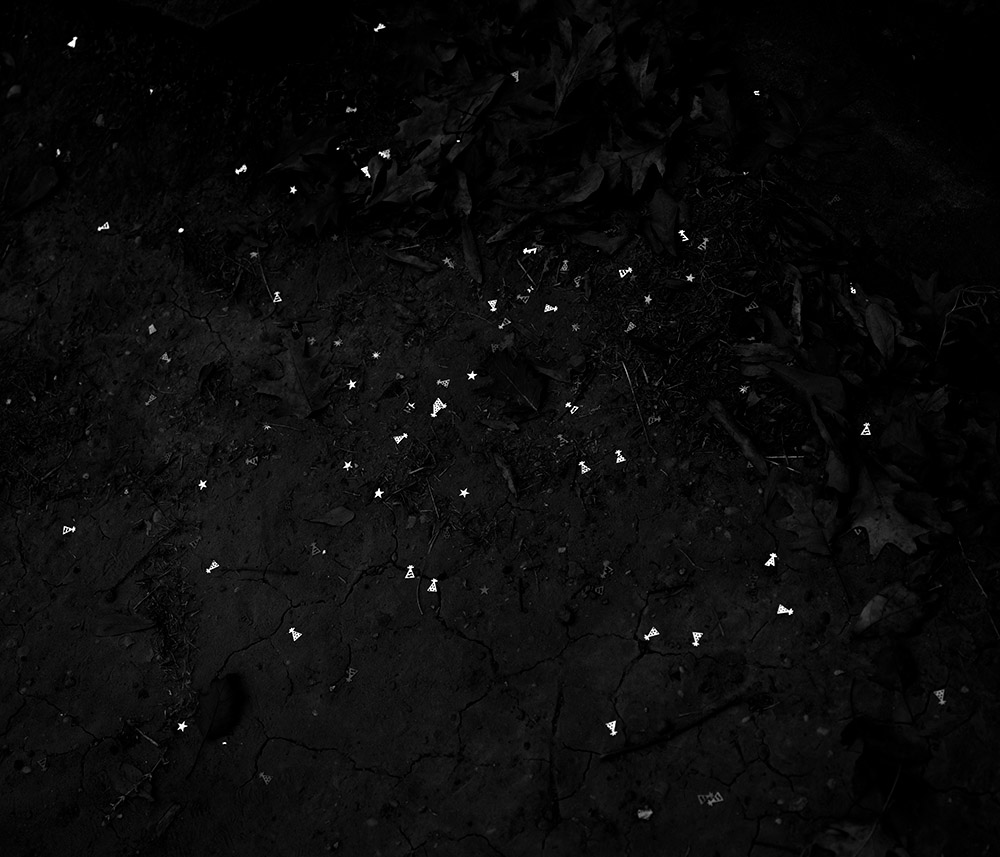
©Jared Ragland; Tuscaloosa, Tuscaloosa County, Ala. Glitter scattered on ruins of the former Alabama state capitol building. 2020. Yoholo-Micco, chieftan of the Upper Creek town of Eufala, is said to have addressed the Alabama Legislature in 1836 at the state capital in Tuscaloosa before departing the ancestral Muscogee homelands on the Trail of Tears. Yoholo-Micco’s actual words are unknown, but the white, colonial writers of history have painted the Creek leader as one who accepted indigenous removal with an air of romantic resignation, going so far as to contrive his final words in a way to whitewash the genocide that had taken place over 300+ years’ time. Yoholo-Micco’s apocryphal address–– which has been reproduced in Alabama history books and grade school curriculum for decades–– reads, in part: “I come here, brothers, to see the great house of Alabama and the men who make laws and say farewell in brotherly kindness before I go to the far west, where my people are now going. In time gone by I have thought that the white men wanted to bring burden and ache of heart among my people in driving them from their homes and yoking them with laws they do not understand. But I have now become satisfied that they are not unfriendly toward us, but that they wish us well.”
DG: Tell us more about the title of the project, its biblical origin, and how you feel it connects to the work.
JR: When I first began working on the project, I created a reading list of Alabama-focused literature and history. On the list was All God’s Dangers, an autobiography of Nate Shaw recounting his life as a sharecropper and tenant farmer between Reconstruction and the Jim Crow-era. It is a beautiful and difficult book. Very early on in the story, somewhere within the first 10 pages, Shaw quotes Ecclesiastes 1. On the surface, that passage of scripture seems to point to the vanity and hopelessness of life, i.e. there’s nothing new under the sun/what has been will be again… But Shaw reads it differently. He sees it as a promise of hope––that, as he says, the “bottom rail will come to the top someday.” Reckoning with the cycles of injustice and envisioning redemption is integral in my aims for this project, and as soon as I read Shaw’s interpretation, I knew What Has Been Will Be Again had to be the title.
As I work within the traditions of photography in the South, it was also important for me to create connections––both directly or tangentially––to photographic history. James Agee and Walker Evans’ “Let Us Now Praise Famous Men” takes its title from another “Wisdom” book from scripture––the Book of Sirach––so that connection seemed appropriately poetic.
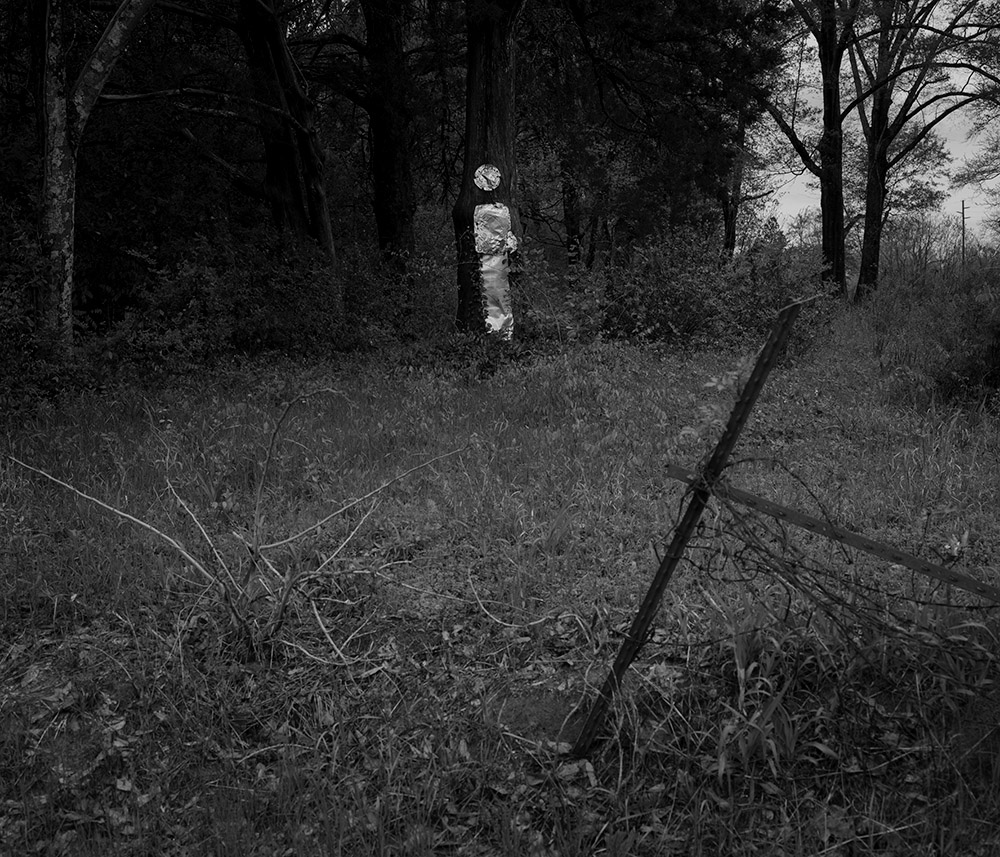
©Jared Ragland; Sumter County, Ala. Tin man scarecrow. 2021. In 1978, Chemical Waste Management, a subsidiary of Waste Management Inc., purchased a landfill permit for a 300-acre tract of land in the center of Sumter County, one of the country’s most impoverished regions. More than 65% of Sumter County residents are Black and over 90% of residents near the landfill are Black. Since acquiring the landfill, Waste Management Inc. has expanded the site to 2,700 acres across what was once lush farmland, creating the largest hazardous waste landfill in the United States, and possibly the world. Nearly 40% of the toxic waste disposed of nationwide between 1984-87 under the federal Superfund removal program ended up at the landfill. The landfill also sits directly over the Eutaw Aquifer, which supplies water to a large part of Alabama. One of the original owners, James Parsons, is the son in law of former governor George Wallace. The political connections enabled the company to obtain the necessary permits from the Health Department to operate the dump.
DG: Several of your photographs utilize extended captions—guiding the viewer’s understanding and interpretation of your imagery through greater historical context. Tell us more about your intentions here.
JR: What Has Been Will Be Again is an attempt to confront the history of where I grew up, and the captions are a means of sharing that confrontation, of looking at the land and considering what has occurred on it, in it, and to it over time.
I identify my practice as less capital-P “Photography” and more about using pictures––alongside text, sequencing, installation, history, and social science research––as a means of bearing witness to the world, telling compelling, empathetic stories, and creating understanding for myself (and hopefully others).
My use of caption text connects to the realizations I made after working in the White House, particularly about the power dynamics involved in writing pictorial history and the incompleteness (if not deliberate bias) of that type of photographic record. The use of text, for me, helps fill in gaps, provides context and nuance, and creates a tension and counterpoint with the image.

©Jared Ragland; Birmingham, Jefferson County, Ala. Mural depicting the murder of George Floyd, Ensley neighborhood. 2020. According to a 2020 investigation by Northeastern University, 123 Black people were killed by white police officers in Jefferson County between 1932–1968. In only two cases were officers charged for the killings. For 26 of the 36 years chronicled, the commissioner of public safety in Birmingham was Eugene “Bull” Connor, who infamously turned fire hoses and attack dogs on civil rights protesters in 1963.
DG: While reading your artist statement, I kept returning to the words “critical moment.” Perhaps because it seems that the world in general is at a reckoning point—socially, politically, and environmentally (though in reality, multiple points in human history have probably had critical moments like these). How can projects like yours, and maybe photographic work in general, help us face and reconcile our “troublesome past and tenuous present?”
JR: While it does feel we are at a particular reckoning point in our nation, What Has Been… addresses the cyclical nature of history and the patterns of inequity, tyranny, and exploitation. Every moment is consequential, and the cliché is true: those who do not know their history are doomed to repeat it. I believe it is our duty as citizen-artists to critically engage whatever moment we live in and see that our practices are joined the long, ongoing work against injustice.
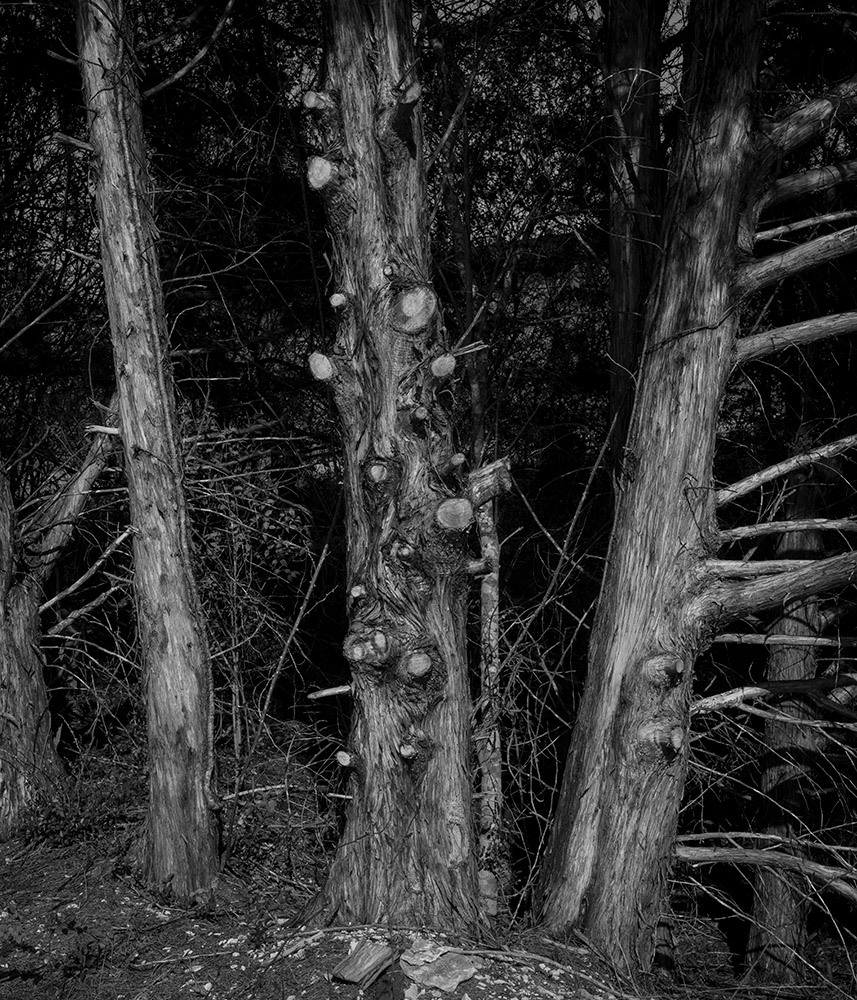
©Jared Ragland; Sumter County, Ala. Near the site of Fort Tombecbe, an 18th cen. stockade built on Choctaw lands. 2021. Originally constructed by French colonialists in 1736 on the border of French Louisiana, Fort Tombecbe was positioned to hold back British intrusion into the area and served as a major French outpost and trade depot among the Choctaw. Control passed to the British in 1763, who renamed it Fort York but abandoned the site. In 1793 Spain acquired the site from the Choctaw in the treaty of Boufouka, which ceded about 10,000 acres of Choctaw land to the Spanish.
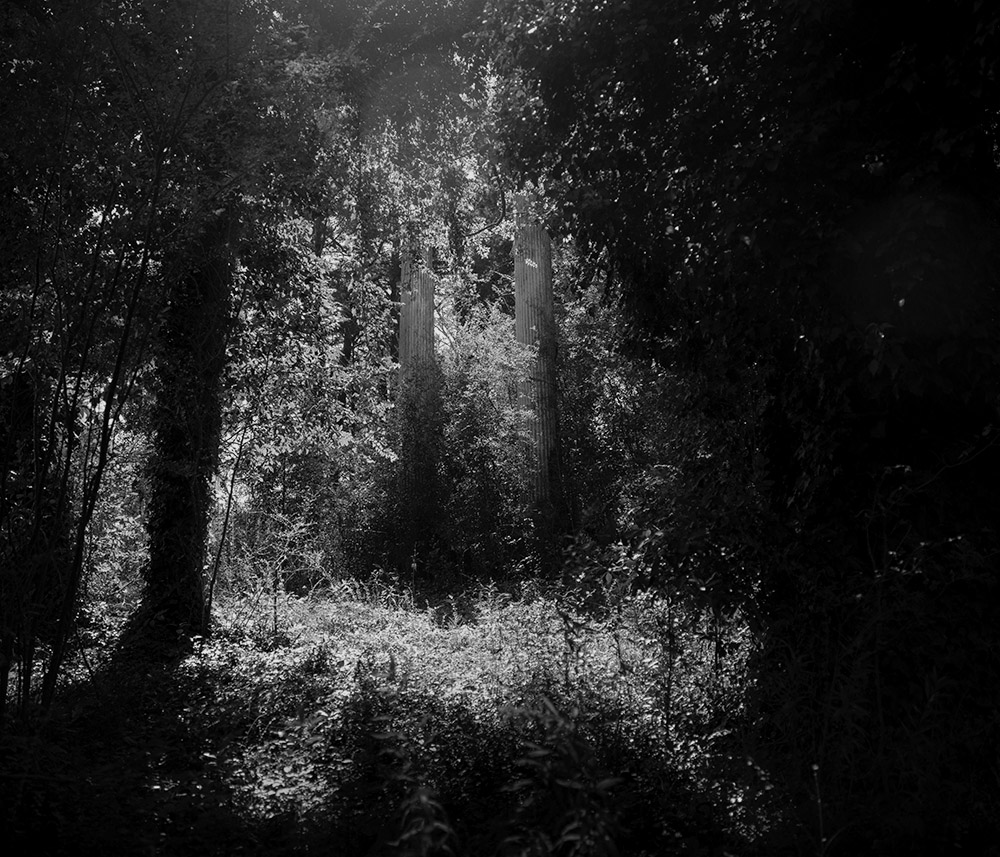
©Jared Ragland; Talladega County, Ala. Ruins of Mt. Ida Plantation. 2020. Destroyed by fire in 1956, the 1840 Greek Revival-style antebellum mansion was built for Walker Reynolds, who owned some 13,000 acres of land and several hundred enslaved persons. The plantation––located near the site of the Muscogee mother town of Abihka––was reportedly a location for the 1915 white-supremacist film, Birth of a Nation.
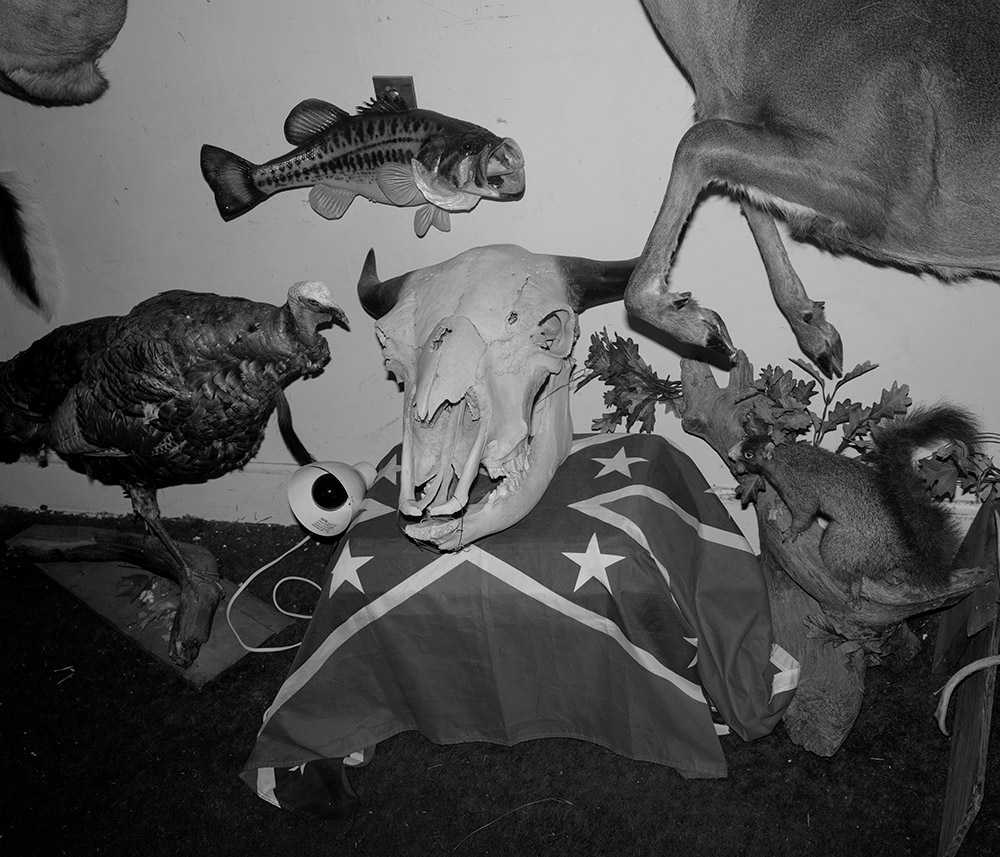
©Jared Ragland; Jacksonville, Calhoun County, Ala. Taxidermy tableaux with Confederate battle flag. 2020.
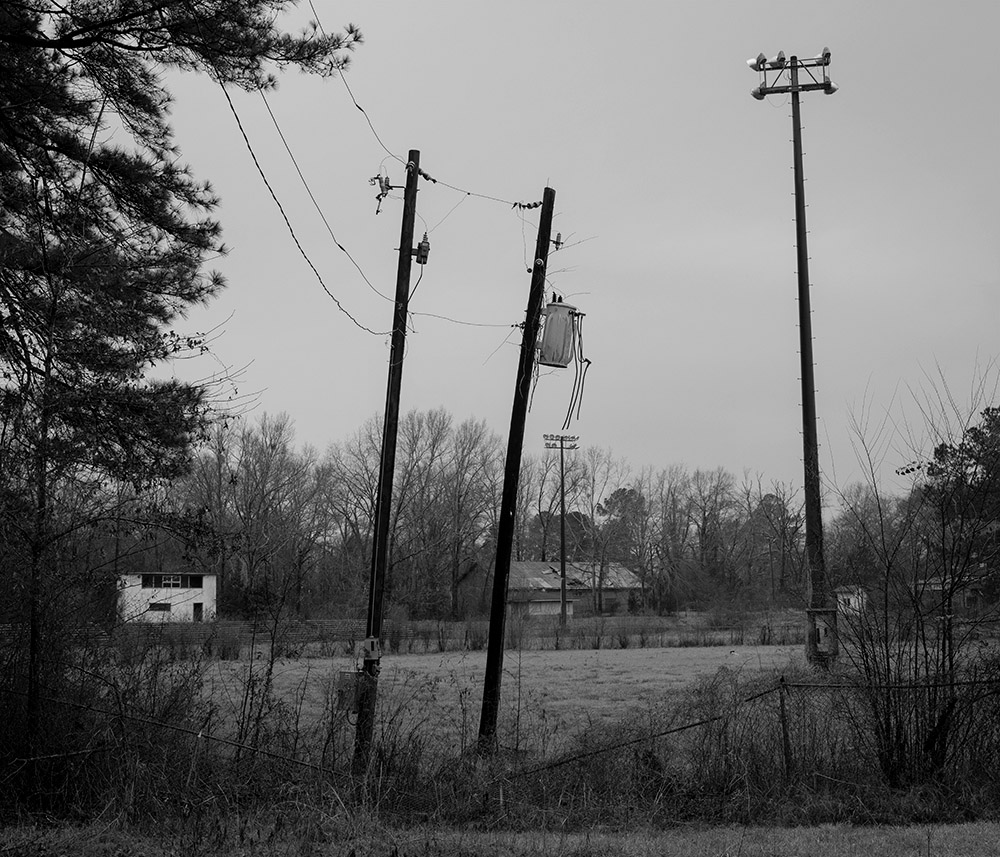
©Jared Ragland; York, Sumter County, Ala. 2020. Legend has it that sometime around 1868, a handsome man rode into Sumter County on a white horse. Immediately charming the residents, Stephen Renfroe would rise to prominence as a leading figure among disgruntled whites against their “carpetbagging Yankee oppressors.” As Sumter County Sheriff and leader of the local Ku Klux Klan, Renfroe was known more for breaking the law than keeping it—orchestrating the kidnappings and murders of several local Republicans, committing arson, and embezzling money. In 1880, he was charged with assault with intent to murder and other crimes, but was acquitted. Following several more arrests, escapes from jail, and living as an outlaw and drifter for years, Renfroe returned to Sumter County, where he threatened to blackmail his former Klan associates. A mob formed in response, seizing Renfroe and marching him to the banks of the Sucarnoochee River, where they hanged him from a chinaberry tree. Sumter County is the poorest county in Alabama. The 1860 Census showed the following totals for Sumter County: Whites – 5,919; Enslaved Blacks – 18,091; and Freed Blacks – 25. The current total population of today’s Sumter County is slightly less than the figure of 140 years ago, but the proportion of White/Black residents is almost exactly the same (25/75%). Joe Biden carried Sumter County in the 2020 election with nearly 74% of the vote.
Posts on Lenscratch may not be reproduced without the permission of the Lenscratch staff and the photographer.
Recommended
-
Aurora Rojas Briceño: Amalia IrmaJune 6th, 2024
-
Aurora Rojas Briceño: Amalia IrmaJune 6th, 2024
-
Healing Riverbanks: Sebastián Mejía’s Walks Along the Mapocho RiverJune 5th, 2024
-
Mournful Cuts: The Political Collages of Amanda Sotelo SilvaJune 3rd, 2024
-
Kyle Agnew | Our Cheeks Blush Amidst Prairie GrassesMay 10th, 2024

